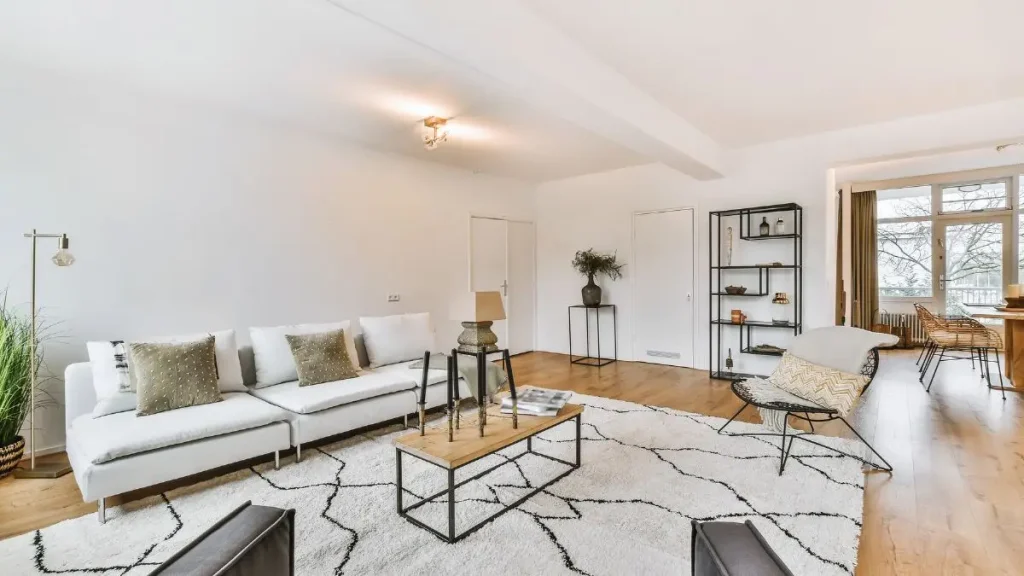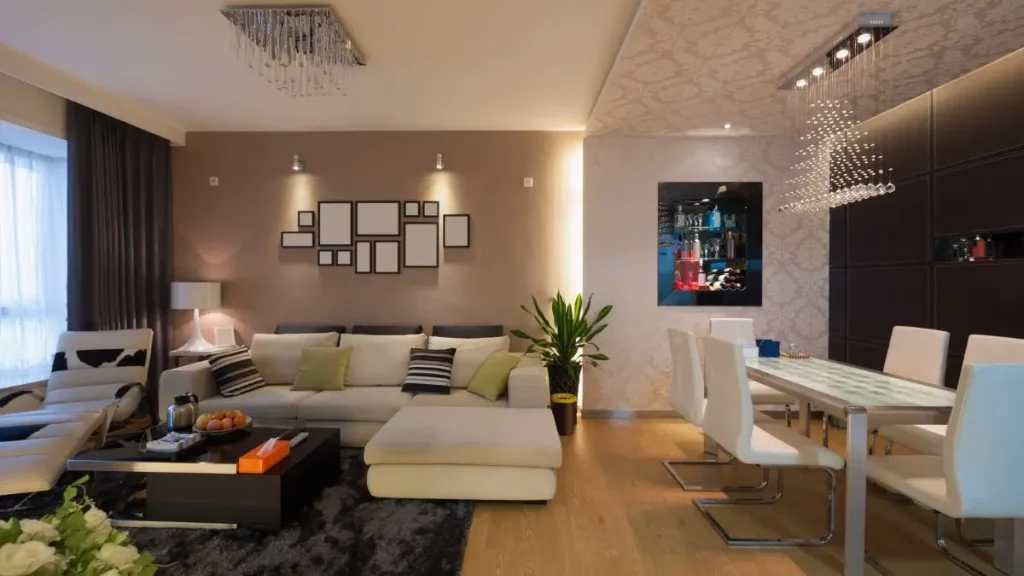Designer Judith Leiber’s East Hampton Estate Listed for $7 Million
Seven years ago, Judith Leiber and her husband Gerson “Gus” Leiber passed away just hours apart, after 72 years of marriage. It wasn’t just the end of a love story—it was the closing chapter of two remarkable creative lives.
Judith, the designer whose jewel-encrusted minaudières once dangled from the hands of First Ladies and Hollywood royalty. Gus, the painter whose abstract works hang in some of the most respected museums in America.
Now, the home where they lived, created, and built their legacy in East Hampton has come back on the market—this time with a nearly $7 million price tag. For me, it’s not just another Hamptons listing. It’s a piece of history—a place where art, fashion, and love were woven into every corner.
And if you think about it, that’s what makes this house stand out. It’s not only 4,500 square feet of luxury tucked behind gates and gardens—it’s a story waiting to be lived in again.
What do you think: if you had the chance, would you buy a home not just for its walls and amenities, but for the story it carries?
From $3M in 2020 to Nearly $7M Today
When I first saw the price tag—just under $7 million—I had to pause. Only a few years ago, in 2020, the Leiber estate sold for just under $3 million. That’s more than double in less than five years.
So what changed? According to Robb Report, the property has been “impeccably reinvigorated.” Think of it this way: the bones of the home were already special—built in 1910, filled with the spirit of two creatives.
But now, after thoughtful upgrades, the interiors feel refreshed without losing their soul. That blend of heritage and polish is what buyers in the Hamptons are paying for today.
And let’s be honest—you and I both know the Hamptons market has gone wild since the pandemic. Inventory is tight, demand is global, and properties with a story like this? They’re rare.
Would you pay twice the price if you knew you were buying into not just a house, but a legacy?
We’ve seen similar jumps in celebrity-owned homes before—like when Derek Fisher and Gloria Govan sold their California home for just under $3M.
Inside the East Hampton Retreat

If you’re like me, you don’t just want numbers—you want to picture yourself inside. The Leiber home isn’t a sterile white box; it’s a lived-in retreat that blends comfort with character.
Walk through the double-height foyer and you’re greeted by terracotta tiles and a sweeping staircase. To the left, a dining room with its own bar, flowing right into a glass conservatory. Imagine sipping morning coffee there, light spilling across the garden.
The kitchen feels airy and practical—skylit, stainless appliances, breakfast nook. Upstairs, the primary suite has its own fireplace, a walk-in closet, and even a spiral staircase that leads to a loft. It’s quirky in the best way.
And then, the part I love most—the detached 1,368-square-foot studio. If you’re a creator, you’d appreciate this space. High ceilings, natural light, lofts for storage or inspiration, and even a garage. It’s not just a studio—it’s a reminder of the art that was made here.
Could you see yourself creating, painting, or even writing in the same room where Gus once worked?
Different vibe, but the same attention to detail showed up when Styx bassist Chuck Panozzo listed his Balinese-style Florida retreat for $1.75M.
The Artistic DNA of the Property
For me, what makes this property different from every other Hamptons listing is the DNA it carries. Judith wasn’t just a handbag designer—she was the “Queen of Minaudières.” Her tiny, jeweled creations ended up in the hands of First Ladies, Hollywood stars, and even in the permanent collections at the Met and the Smithsonian.
And Gus? His work hangs in the Whitney and the National Gallery of Art. Not every home can say its walls once belonged to two people whose art changed how we see beauty.
Then, just across the way, sits the Leiber Collection—a Palladian-style museum and sculpture garden they opened in 2008. It’s not a tourist trap. It’s a cultural landmark. Imagine living across the street from a museum dedicated to the very people who built your house.
Wouldn’t you feel like you’re buying into something bigger than real estate—a piece of cultural history?
I’d love to hear your thoughts—would you ever choose a home for its cultural and artistic legacy, or do you think real estate should be about modern amenities first? Drop your take in the comments.
East Hampton’s Springs: An Artist Colony
Now let’s zoom out. The home isn’t just in East Hampton—it’s in Springs. If you know your art history, you know this hamlet has long been a magnet for creatives. Pollock and Lee Krasner made their mark here. The Leiber estate just adds to that lineage.
To me, that context matters. When you buy here, you’re not just buying ocean proximity or Hamptons prestige—you’re stepping into an artist’s colony. That energy seeps into the landscape, the community, the very air.
Think about it: would you rather buy a house in a random zip code, or one with a cultural heartbeat?
Funny enough, I recently shared a behind-the-scenes note about how artist colonies like Springs continue to influence today’s luxury markets in our WhatsApp updates—it’s the kind of context that makes stories like this richer.
Why This Listing Matters Now?

Here’s what I see: this isn’t just another East Hampton property being pushed to wealthy buyers. This is Sotheby’s International Realty marketing a piece of art disguised as a home. Agents Ann Ciardullo and Keith Green know exactly what they’re holding—a one-of-a-kind mix of architecture, history, and cultural weight.
And timing? Perfect. Luxury buyers right now aren’t chasing cookie-cutter moderns. They want heritage, scarcity, and something with a story they can tell at dinner. This home checks all three boxes.
For you as a reader—or even as a potential buyer—this moment matters because properties like this don’t cycle back often. Once it’s gone, it’s gone.
So let me ask you: if you were looking for a Hamptons home, would you wait for another piece like this to surface, or would you jump at the chance now?
For Luxury Buyers & Collectors: More Than a Home
Here’s the thing—you can buy a big Hamptons house almost anywhere. But how many homes come with this kind of pedigree? If you’re a fashion collector, Judith Leiber’s handbags are probably already on your radar.
Some of her minaudières sell for thousands at auctions, and museums keep them in permanent collections. Owning her home is like owning the “ultimate piece” in that collection.
And if you’re more of an art investor, Gus’s legacy carries the same weight. His works hang in the Whitney and the National Gallery of Art. That kind of provenance elevates a house from “property” to “cultural artifact.”
So when I look at this place, I don’t just see square footage—I see a rare crossover between art, fashion, and real estate. If you had the chance to buy a house that doubles as a cultural heirloom, would you take it?
It reminds me a bit of how soccer coach Steve Cherundolo’s Los Angeles storybook home drew interest not just for size, but for the unique character woven into its design.
How to Explore the Listing?

If you’re curious, you don’t have to imagine everything—I’d recommend starting with Sotheby’s International Realty’s listing. Agents Ann Ciardullo and Keith Green are handling it, and the photos give you a closer look at the interiors and the studio.
And here’s a tip most people will miss: if you ever visit East Hampton, don’t just drive by the house. Walk into the Leiber Collection museum right across the road.
You’ll see Judith’s handbags and Gus’s paintings up close, in the space they envisioned. It makes the home feel even more alive.
Wouldn’t you want to step inside and see the connection for yourself?
The Lasting Legacy of Judith & Gus Leiber
At the end of the day, this isn’t just about $7 million. It’s about a story that began in 1956, when two young creatives bought six acres in Springs for $10,000 and slowly shaped it into a sanctuary. It’s about a couple who stayed together for 72 years, and even in death, couldn’t be apart.
That’s why this listing hits differently. It’s a house, yes—but it’s also a love story, an artist’s journey, and a slice of cultural history all rolled into one. And now, someone new gets to add their own chapter.
So let me leave you with this: if you had the chance, would you live inside someone else’s story—or keep searching for a blank slate to write your own?
If stories like this fascinate you, you’ll enjoy exploring more unique celebrity homes we’ve covered on Build Like New.
Disclaimer: The details shared in this article are based on publicly available reports, Sotheby’s International Realty listing, and trusted media sources. This piece is for informational purposes only and does not constitute real estate or investment advice. Readers are encouraged to verify information independently before making decisions.


